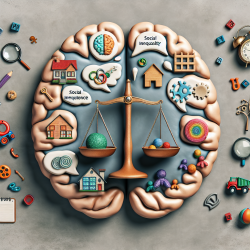The field of neurology is constantly evolving, with new research challenging long-held beliefs and opening doors to innovative treatments. One such area of transformation is the understanding of basal ganglia pathophysiology. As practitioners, staying abreast of these changes is crucial for enhancing our skills and improving patient outcomes.
The Challenge to Existing Theories
Recent research has put into question the widely accepted Globus Pallidus Interna Rate theory, which posited that over-activity of the globus pallidus interna (GPi) causes hypokinetic disorders such as Parkinson's disease. However, studies have shown that parkinsonism can exist without increased GPi activity, suggesting that this theory may no longer hold true.
This revelation underscores the importance of critically evaluating existing theories and being open to new ideas. It highlights the need for practitioners to engage in ongoing education and research to stay informed about the latest developments in their field.
Opportunities for Practitioners
The implications of these findings are profound. They suggest that deep brain stimulation (DBS), a treatment that has shown remarkable success in managing movement disorders, may operate through mechanisms not fully understood by current theories. This opens up opportunities for practitioners to explore new therapeutic approaches that could enhance the effectiveness of DBS and other treatments.
- Engage with New Research: Practitioners should actively seek out and engage with the latest research publications, webinars, and conferences to stay updated on advancements in basal ganglia pathophysiology.
- Collaborate and Network: Networking with peers and experts in the field can provide valuable insights and foster collaborative efforts to explore new hypotheses and treatment modalities.
- Encourage Critical Thinking: Encourage a culture of critical thinking within your practice or institution. Question existing paradigms and be open to exploring alternative explanations for observed phenomena.
The Path Forward
As we move forward, it is essential for practitioners to embrace change and be willing to adapt their practices based on emerging evidence. This requires a commitment to lifelong learning and a willingness to challenge the status quo.
The journey toward a deeper understanding of basal ganglia pathophysiology is ongoing. By remaining engaged with current research and fostering a spirit of inquiry, practitioners can contribute to the development of more effective therapies for movement disorders.
To read the original research paper, please follow this link: One View of the Current State of Understanding in Basal Ganglia Pathophysiology and What is Needed for the Future.










